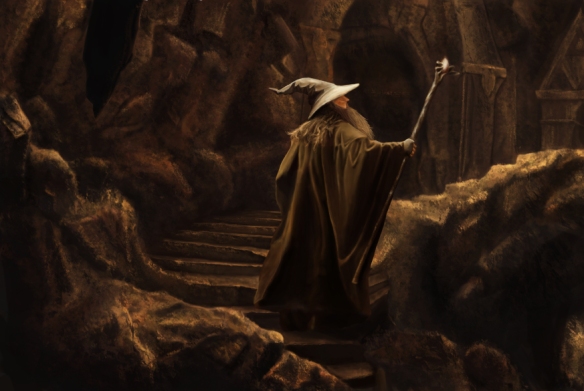
One of the chief difficulties for aspiring artists of all kinds, is that we often misunderstand the relationship between what our art could be and what it presently is. When we encounter great art it appears like the transformative power of the magician’s staff. Great art opens a gateway to the realm of the gods. It reveals things hidden to our normal senses. It changes our view of the world and ourselves. Great artists seem to pursue their art as a sacred calling, as if it were the grail itself: a chalice of solace and renewal to which they return again and again throughout all of life’s vicissitudes. Even among those artists who are merely technically excellent, and not necessarily endowed with greatness of insight and expression, we wonder at the power their art has to move the world. We see it bring to some riches and renown. We see it used to shield the weak, humble the wicked, build communities of friendship and tear down prison walls. Our own work of course does none of these things. It seems rote, mechanical, and immature. Our enthusiasm for what art represents rubs against our experience of actually doing it. We stop. We balk. We falter. Why?
There is a pernicious lie we believe. It is the lie of the “inner genius”. The substance of this lie is that somewhere within us resides an homunculus – a tiny person. This “inner artist” possesses all the wondrous creative power we seek, complete and fully developed. In order for us to achieve the artist’s life, it is only necessary to contact this mischievous imp, who will then spin thread into gold, make the sun still in the sky, and open the doorway to Narnia. This is assuming of course that we are “real” artists. Non-artists don’t have an inner Shakespeare, a miniature Gauguin, or a tiny Beethoven. Perhaps they have a pet genius for spreadsheets, or an innermost sacred accountant. Having this model of the creative process, we are disturbed when we sit down to work and find our minuscule demon missing from his station. Perhaps we have done something to drive him away, and should seek out some kind of artist’s penance? There is a whole industry of books, support groups, and retreats providing this service. Perhaps we are not sensitive enough and must “develop” our “creative intuition”? Most occult and spiritual practices are substitutes for nothing else. Perhaps we are – horror of horrors – not a “real” artist at all, and should resign ourselves to corporate mediocrity and mindless entertainments? Whatever it is, we must do something. Clearly something is wrong with us, for the magic gate is closed.
Monthly Archives: August 2015
Full Circle
“Whenever you experience mental vacillation, cast your mind back to the Greco-Roman mentality as it was before the second century.”
– Montherlant
“In the first place, paganism is not a ‘return to the past.’ It does not consist of what could be called ‘one past versus another’… It is not a manifestation of a desire to return to some kind of ‘lost paradise’ (this is rather a Judeo-Christian theme), and even less… to a ‘pure origin’.
Contemporary paganism does not consist of erecting altars to Apollo or reviving the worship of Odin. Instead it implies looking behind religion and, according to a now classic itinerary, seeking for the ‘mental equipment’ that produced it, the inner world it reflects, and how the world it depicts is apprehended. In short, it consists of viewing the gods as ‘centers of values’… and the beliefs they generate as value systems: gods and beliefs may pass away, but the values remain.
Far from being confused with atheism or agnosticism, it poses a fundamentally religious relationship between man and world – and a spirituality that appears to us much more intense, much more serious, and stronger than what Judeo-Christianity claims for itself. Far from desacralizing the world, it sacralizes it in the literal sense of the word; it regards the world as sacred – and this is precisely, as we shall see, the core of paganism.”
– Alain de Benoist


